Recent research
Hybrid Manufacturing of Polymer Composites
We are developing a hybrid scheme with both machining and chemical polishing integrated into a 3D printer for polymer and polymer composites. The current focuses are on G-code integration, sequence planning, real-time sensing, and adaptive control.
Read more:
-Nigam A, Tai BL, 2023, "Surface Characterization of Three-Dimensional Printed Fiber-Reinforced Polymer Following an In-Process Mechanical–Chemical Finishing Method," Journal of Manufacturing Science and Engineering.
-Nigam A, Tai BL, 2021, "In-process chemical and mechanical polishing for fused filament fabrication: A feasibility study," Manufacturing Letters.
Sponsor: Internal
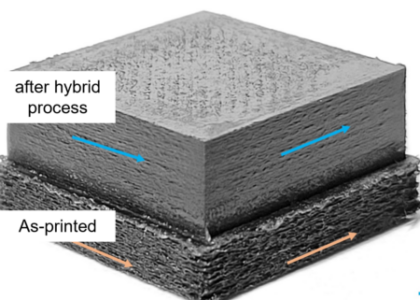
Machinability of Additively Made Metal Alloys
We are studying the differences in machinability between multiple additively-made and traditionally-made metal alloys, including Ti64, Niconel, 17-4 Steel, A205, etc. These differences are correlated to the microstructure and mechanical behavior of these alloys. The current focuses include new constitutive models for FEA and process optimization.
Read more:
-Raval J, Kazi A, Randolph O, Guo X, Zvanut R, Lee C, Tai BL, 2023, "Machinability comparison of additively manufactured and traditionally wrought Ti-6Al-4V alloys using single-point cutting," Journal of Manufacturing Processes.
Sponsor: Honeywell FM&T /DOE

Fracture-accelerated Hard Rock Drilling
We are investigating rock cutting mechanics for a patent-pending technology "Shockwave and Plasma Accelerated Rock Cracking (SPARC)" by experimentally and numerically analyzing its cutting behavior and efficiency under ambient and high pressure environments. The next steps are full-scale drilling tests and in-process sensing of cracking.
Read more:
-Kazi A, Akhter M, Antao D, Staack D, Tai BL, 2023, "The Effects of Plasma Pre-cracking on Drilling of Hard Rocks: A Single Insert Cutting Experiment," Journal of Manufacturing Science and Engineering.
-Kazi A, Kao YT, Tai BL, 2021, "Comparison of Rotary and Linear Cutting Methodology in Determining Specific Cutting Energy of Granite," Journal of Manufacturing Science and Engineering.
Sponsor: DOE-EERE

Machining Learning to Solve Moving Heat Source Problems in Real Time
Moving heat source problems are commonly seen in many manufacturing processes, such as welding, machining, additive manufacturing, as well as in surgical operations. We are developing a machine learning framework to enable real-time prediction of temperature distribution. Current focuses include scaling up, incorporating complex boundary conditions, and experimental validation.
Read more:
-Kung PC, Heydari M, Tsou NT, Tai BL, 2023, "A neural network framework for immediate temperature prediction of surgical hand-held drilling," Computer Methods and Programs in Biomedicine.

Data-driven Training and Assessment Scheme for Surgical Drilling
We are developing a data-driven scheme using statistics and machine learning with motion, force, and time data to inform training in surgical drilling. Validity studies and initial trials have been performed in collaboration with orthopaedic surgeons at University of Texas Health Science Center at Houston. The next step would be implementation and evaluation in residency programs.
-Nigam A, Mohanty RR, Kellam JF, Ambrose CG, Krishnamurthy VR, Tai BL, 2023, "An objective assessment for bone drilling: A pilot study on vertical drilling," J Orthop Res.
-Nigam A, Kellam JF, Ambrose CG, Tai BL, 2023, "A data-driven methodology to comprehensively assess bone drilling using radar plots," in review.
Sponsor: ABOS
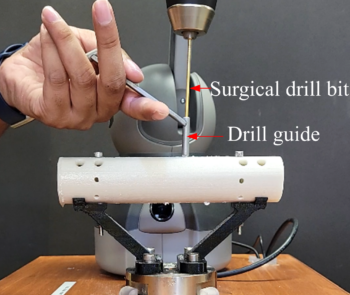
Past Projects (AM related)
Customized FDM Processes: Silicone, PEC-PLA and PEC-Nylon
We customized and developed extrusion-based methods to 3D print various polymers for our collaborators, including fire-retardant PLA and Nylon and silica-modified PDMS. Read more:
-Kolibaba TJ, Nigam A, Tai BL, Grunlan JC, 2021, "Environmentally Benign Flame Retardant Polyamide-6 Filament for Additive Manufacturing," Macromolecular Materials and Engineering.
-Kolibaba TJ, Shih CC, Lazar S, Tai BL, Grunlan JC, 2020, "Self-Extinguishing Additive Manufacturing Filament from a Unique Combination of Polylactic Acid and a Polyelectrolyte Complex," ACS Materials Letters.
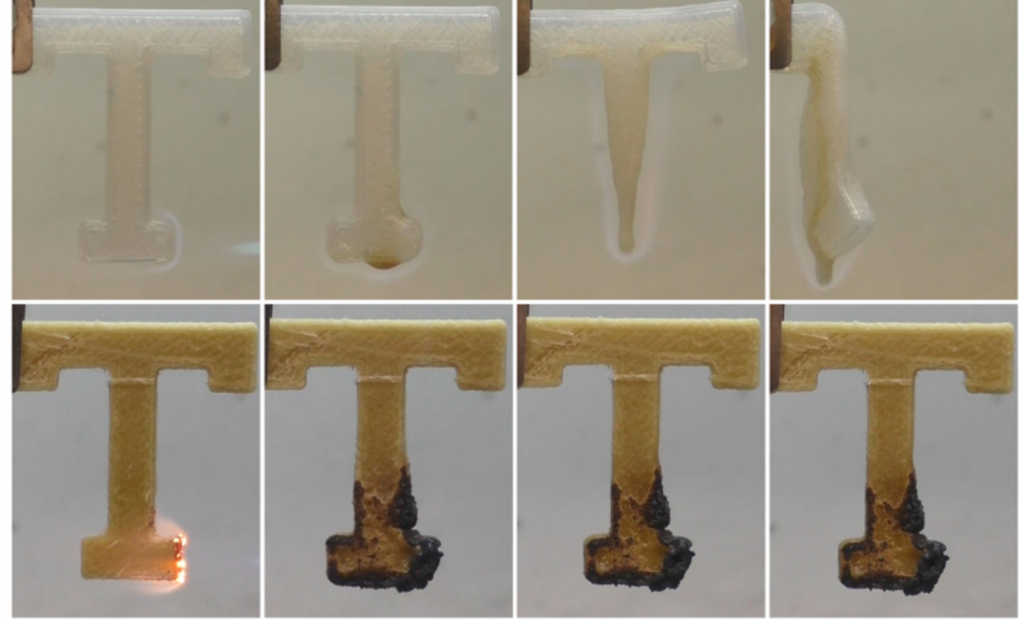
Projected UV-curing with Self Support
We developed a new 3D printing for photopolymers to achieve zero support for over hanging structures. This technology can be analogized as a combination of SLA and DED. Read more:
Mizuno Y, Pardivala N, and Tai BL, 2018, "Projected UV-resin curing for self-supported 3D printing," Manufacturing Letters, 18, pp. 24-26.
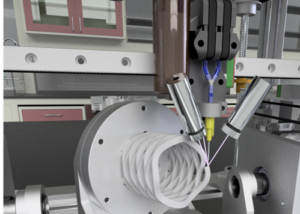
Continuous SLA with Optically-produced Dead Zone
We investigated the idea of optically created dead zone to enable continuous vat photopolymerization through altering optical lenses and wavelength. Read more:
-Kim DS, Suriboot J, Grunlan MA, Tai BL, 2019, "Feasibility study of silicone stereolithography with an optically created dead zone," Additive Manufacturing.
-Kim DS, Kao YT, Tai BL, 2016, "Hydrostatic 3D-printing for soft material structures using low one-photon polymerization," Manufacturing Letters.
-Kim DS, Tai BL, 2016, "Hydrostatic support-free fabrication of three-dimensional soft structures," Journal of Manufacturing Processes.
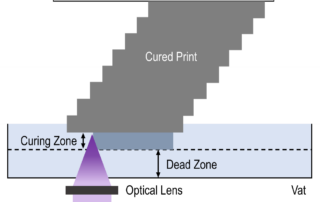
Low-Force DLP/SLA for Photocurable PDMS
We synthesized a photocurable PDMS for DLP/SLA and used a hydrogel interface to achieve low adhesion force to print this fragile and soft material. Read more:
-Kim DS, Suriboot J, Shih CC, Cwiklik A, Grunlan MA, Tai BL, 2020, "Mechanical isotropy and postcure shrinkage of polydimethylsiloxane printed with digital light processing," Rapid Prototyping Journal.
-Yang F, Kazi A, Marmo A, Grunlan MA, Tai BL, 2022, "Characterizing the separation behavior of photocurable PDMS on a hydrogel film during vat photopolymerization: A benchmark study," Additive Manufacturing.
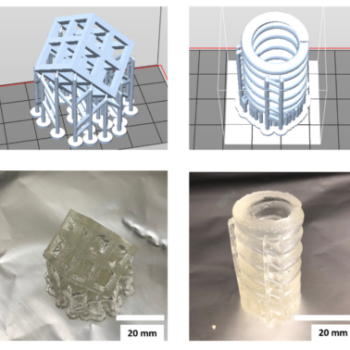
3D Printed Composite Structures
We used 3D printing technology to create different composite structures for their unique properties, such as improved impact attenuation and absorption. Read more:
-Chen S, Tai BL, Wang J, 2023, "An experimental study of 3D printing based viscoelastic bimaterial subjected to low-velocity impact," Mechanics of Materials.
-Kao YT, Amin AR, Payne N, Wang J, Tai BL, 2018, "Low-velocity impact response of 3D-printed lattice structure with foam reinforcement," Composite Structures.
-Kao YT, Zhang Y, Wang J, Tai BL, 2017, "Bending behaviors of 3D-printed Bi-material structure: Experimental study and finite element analysis," Additive Manufacturing.
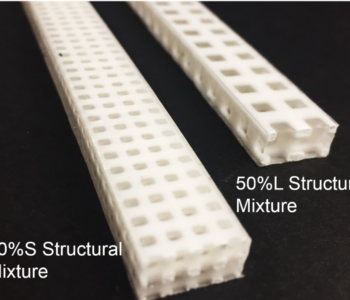
Past Projects (Machining-related)
Mist Flow Analysis in MQL Machining
We studied the two-phase flow in minimum quantity lubrication (MQL) machining, particularly on how the through-tool channel configuration affects the droplet distribution on/to cutting edges.
-Raval JK, Tai BL, 2022, "Mist Flow in Through-Tool Minimum Quantity Lubrication Drilling: Two-Phase Flow Simulation and Experimental Observation," Journal of Manufacturing Science and Engineering.
-Raval JK, Tai BL, 2021, "An optical tomographic method to characterize the mist distribution in MQL Tools," Journal of Manufacturing Processes.
-Raval JK, Kao YT, Tai BL, 2020, "Characterizing Mist Distribution in Through-Tool Minimum Quantity Lubrication Drills," Journal of Manufacturing Science and Engineering.

Numerical Modeling of Brittle Material Cutting
We applied finite element analysis (FEA) and smoothed-particle hydrodynamics (SPH) method to simulate machining of brittle materials as opposed to the traditional FEA-based plasticity model for metals.
-Takabi B, Tai BL, 2019, "Finite Element Modeling of Orthogonal Machining of Brittle Materials Using an Embedded Cohesive Element Mesh," Journal of Manufacturing and Materials Processing.
-Takabi B, Tajdari M, Tai BL, 2017, "Numerical study of smoothed particle hydrodynamics method in orthogonal cutting simulations – Effects of damage criteria and particle density," Journal of Manufacturing Processes.

